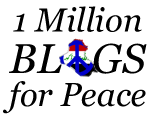Another time, another hurricane... a different president
"This is your President!" Johnson announced. "I'm here to help you!"
In September of 1965, Hurricane Betsy slammed into New Orleans. Winds gusted up to 165 miles per hour and the levees failed, flooding much of New Orleans. Somewhere around 250,000 people were forced from their homes in what was, to date, the worst disaster to hit NOLA since the turn of the century.
The day after Betsy's landfall, President Lyndon Johnson got a phone call from Louisiana Senator Russell Long, asking if LBJ would come to the city. Within hours, LBJ was on on a plane:
Even at the airport, Johnson began to get a sense of the damage wrought by Betsy. "Parts of the roofing of the terminal were torn away and several of the large windows were broken," the diary reads. "The members of the Presidential party had seen from the air a preview of the city — water over 3/4 of the city up to the eaves of the homes, etc." At the urging of the mayor of New Orleans — a diminutive conservative Democrat named Victor Hugo Schiro, whom Johnson referred to as "Little Mayor" — the President decided to tour the flooded areas. His motorcade stopped on a bridge spanning the Industrial Canal, in the eastern part of the city, and from there the Presidential party saw whole neighborhoods engulfed by floods. They could see, according to the diary, that "people were walking along the bridge where they had disembarked from the boats that had brought them to dry land. Many of them were carrying the barest of their possessions and many of them had been sitting on top of their houses waiting for rescue squads to retrieve the families and carry them to dry land." Johnson talked with a seventy-four-year-old black man named William Marshall and asked about what had happened and how he was getting along. As the conversation ended, Marshall said, "God bless you, Mr. President. God ever bless you."
In the Ninth Ward, Johnson visited the George Washington Elementary School, on St. Claude Avenue, which was being used as a shelter. "Most of the people inside and outside of the building were Negro," the diary reads. "At first, they did not believe that it was actually the President." Johnson entered the crowded shelter in near-total darkness; there were only a couple of flashlights to lead the way.
"This is your President!" Johnson announced. "I'm here to help you!"
The diary describes the shelter as a "mass of human suffering," with people calling out for help "in terribly emotional wails from voices of all ages. . . . It was a most pitiful sight of human and material destruction." According to an article by the historian Edward F. Haas, published fifteen years ago in the Gulf Coast Historical Review, Johnson was deeply moved as people approached and asked him for food and water; one woman asked Johnson for a boat so that she could look for her two sons, who had been lost in the flood.
"Little Mayor, this is horrible," Johnson said to Schiro. "I've never seen anything like this in my life." Johnson assured Schiro that the resources of the federal government were at his disposal and that "all red tape [will] be cut."
The President flew back to Washington and the next day sent Schiro a sixteen-page telegram outlining plans for aid and the revival of New Orleans. "Please know," Johnson wrote, "that my thoughts and prayers are with you and the thousands of Louisiana citizens who have suffered so heavily."
Labels: LBJ, levees, New Orleans, President Lyndon Johnson Hurricane Betsy



























































0 Comments:
Post a Comment
<< Home